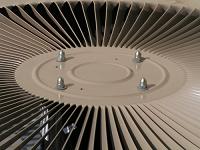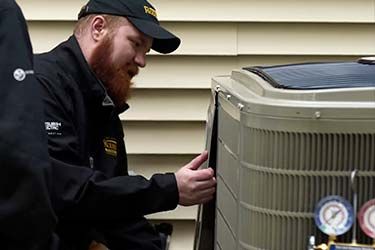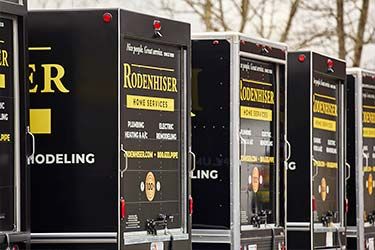



SEER And HSPF: Why Are They So Important?
When you're selecting a new heat pump, the two critical factors to consider are the SEER and HSPF, the ratings that the Department of Energy requires to inform consumers of a unit's energy efficiency.

SEER is short for seasonal energy efficiency ratio, while HSPF stands for heating seasonal performance factor. And these two acronyms will make a big difference in your electric bills, as higher ratings indicate better efficiency. Our region has many more heating degree days than cooling days, which means of the two ratings, the HSPF is more important than the SEER, whose minimum is 13. The lowest allowable HSPF is 7.7, but upgrades can bring the rating to as high as 10.
Heat pumps do not require fuel, but do use electricity for cooling and heating. These appliances are among the most energy efficient systems for cooling your home in the summer, and for heating it in the winter when temperatures are above the mid 30s. Since they rely on air temperatures (or ground temperatures in the case of ground-source systems) for heating in the winter, both the source the heat pump uses for heating and the kind of compressor it uses make a difference in the SEER and HSPF ratings.
Geothermal heat pumps may have higher ratings for both SEER and HSPF because they tap into underground temperatures that are stable throughout the year to disperse heat out of the home in the summer and bring it into the home in the winter. Geothermal systems can provide consistent heat throughout our winters regardless of outdoor air temperatures.
An air-source heat pump can produce warmer temperatures if it has a scroll compressor that is capable of warming the refrigerant 10 to 15 degrees more than a piston compressor. As a result, a system that utilizes a scroll compressor raises the efficiency rating of a heat pump.
If you would like more information about the meaning and implications of the SEER and HSPF ratings, please contact Rodenhiser Plumbing, Heating & Air Conditioning. We've provided HVAC services for the Route 495/128 area of Medway MA for over 80 years.
Our goal is to help educate our customers about energy and home comfort issues (specific to HVAC systems). For more information about other HVAC topics, download our free Home Comfort Solutions Guide.
Image via Shutterstock.com
Nice people.
Great service.
Since 1928Terms & Conditions | Privacy Policy





Read From Over 14,000 Happy Customers
-
Both Alex and Patrick were knowledgeable, courteous, and professional. They made a change that might have solved the recent problem and have structured a more complete solution. We agreed to this...

-
Mike was thorough, thoughtful and considerate. Covered their shoes before entering, surveyed my issue and provided an explanation of the services and costs. Great Job!

-
Alex did a great job providing an explanation of the services provided and went out of his way to offer assistance/advice on other issues outside of our scheduled maintenance visit.

-
Brian did an excellent job inspecting our 18-year old boiler and replacing some of the accessory hardware that needed it, he also adjusted the outgoing hot water settings for our radiators and...

-
Rodenhiser is my one stop shop!!! They take care of my HVAC, electrical, and plumbing issues & are always helpful addressing any questions I may have about the systems in my house! Everyone...

-
Chris G. and Nick V. showed up bright and early at 8am to fix my water heater issue. They were on time, polite and were able to fix an issue that has been plaguing my house for a good year. They...

Call Rodenhiser at
508-321-3089
Call Rodenhiser at 508-321-3089
When you are looking for plumbing, electrical, heating or air conditioning in the Route 495 / 128 area, you will be delighted that you called Medway MA' trusted choice since 1928.
With a total dedication to professional workmanship and excellent service, discover why families and businesses continue to trust Rodenhiser after generations of service

Trusted Plumbers
Fast, On Time
HVAC Experts
Satisfaction Guaranteed
Expert Electricians
Maintenance Plans
CONTACT RODENHISER TODAY
325 Hopping Brook Rd Holliston MA 01746.
-
Master Plumber: #10961
-
Corporate Plumbing: #2288
-
Master Electrician: #23917A
-
Electrical Business: #4804
-
Master Sheet Metal (Unrestricted): #5867
-
Corporate Sheet Metal: #641
-
Home Improvement Contractor: #188806
*Heating system check terms and conditions: Residential Only. Must reside within our service area. Offer only available to 1 unit per household additional units are at full price. Can not be combined with other offers
*Late Season Special Extra Conditions: Gas Systems only. No Discounts on oil systems. Promotional price limited to one system per home, additional systems will be charged at full price. Residential Systems only. Must reside within our service area. *For EV Charger Offer also: valid only when the system is purchased through Rodenhiser.
















